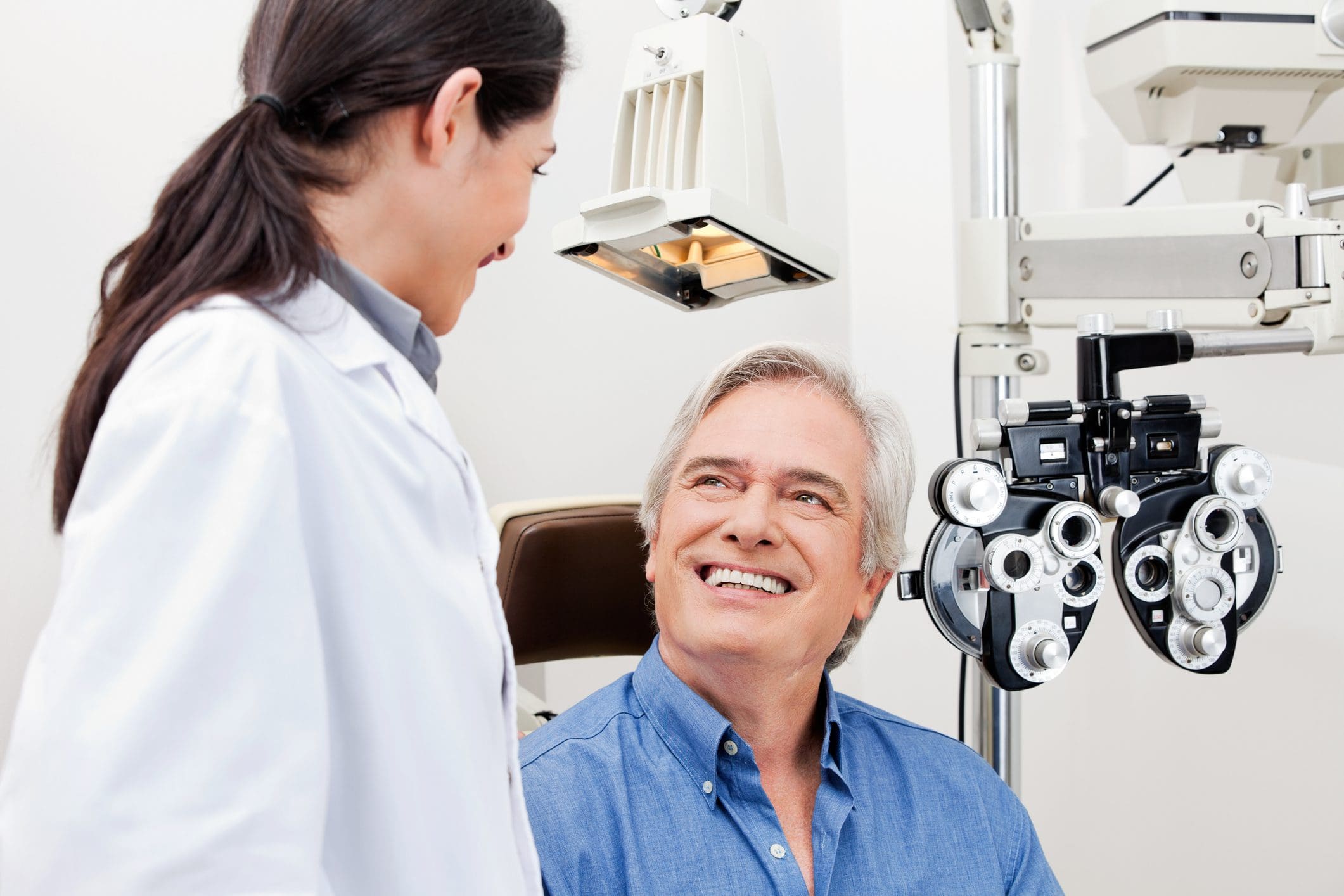Entropion Surgery: How It Works & Associated Costs
Last Updated:
Table of Contents
Expected Costs of Entropion Surgery

Costs for the procedure can range from around $500 to $2,000. Additional costs, including anesthesia fees, costs associated with necessary medications, tests and examination fees prior to surgery, aftercare appointments, and hospital fees, can also be incurred.
Insurance will often cover at least a portion of entropion surgery since it is most commonly determined to be a medically necessary procedure. Contact your insurance provider to find out what your out-of-pocket costs might be.
Entropion is a condition common in older adults that causes the eyelid to turn inward. It typically affects the lower eyelid and can cause the eyelashes to be up against the eye, which can cause irritation to the eye and even potentially damage the cornea.
In mild forms the condition can be managed with nonsurgical options, such as Botox injections, transparent tape, contacts, and eye drops, but the only way to potentially reverse entropion is through surgery. Entropion costs can vary from several hundred to a few thousand dollars, depending on the severity and type of surgery needed.
Specific forms of entropion surgery are performed based on the underlying cause of the condition and its severity.
There are risks for any type of surgery, and it is important to take care of yourself after the procedure. Your eye doctor can walk you through treatment options.
Causes of Entropion
Entropion is a condition that impacts the lower eyelid. It occurs when the eyelid is turned in and causes the eyelashes to be pushed up against the eye. The eyelid can be constantly turned in or only when you close your eyes or blink hard.

Mayo Clinic reports that entropion is most common in older adults, as it is often caused by a weakening of muscles and stretching of tendons under the eye. Entropion can also be a congenital (birth) disorder that may resolve itself in the first year of life. Congenital entropion is typically not treated surgically as a result.
You deserve clear vision. We can help.
With 135+ locations and over 2.5 million procedures performed, our board-certified eye surgeons deliver results you can trust.
Your journey to better vision starts here.
Trauma, including eye infections, previous eye surgeries, burns, and scarring, can also cause entropion. Spastic entropion can be caused by eyelid muscle spasms related to inflammation of the eye, which can be treated with eye drops and methods for relieving inflammation.
The Need for Surgery
Symptoms of entropion can be temporarily relieved by using transparent tape on the eyelid to turn it the right way, lubricating eye drops, a soft contact to protect the cornea from being scratched or irritated by the eyelashes, Botox injected into the lower eyelid, or stitches places in the eyelid to turn it outward. All of these are temporary solutions, and surgery is often the optimal course of action for entropion.
If you experience any of the following related to entropion, you may wish to seek out surgery for a long-term fix:

- Red, irritated eyes
- Feeling like something is in your eye
- Sensitivity to wind and light
- Eye pain
- Watery eyes
- Crusting on the eyelid and mucus discharge
- Decreasing vision
Left untreated, entropion can injure the cornea, potentially leading to corneal ulcers, eye infections, and vision loss. Typically, surgery is deemed the most common long-term solution to entropion.
Types of Entropion Surgery
Entropion surgery is typically an outpatient surgery that can be performed at an ophthalmologist’s office, a surgery center, or a hospital. It generally takes under an hour to complete and can be managed with local anesthesia.
There are multiple forms of entropion surgery that can be performed based on the level of entropion and cause of the condition.
- Everting sutures: Everting means to turn something inside out. In this case, it means to turn the eyelid right side out. It is a relatively fast procedure that uses stitches inside the eyelid to stiffen it up and keep it from turning in to irritate the eye. Numbing drops are put into the eye while you are laying down, and the stitches are placed in a matter of minutes. The stitches will typically be dissolvable and not need to be taken out. Entropion may return in time with this procedure.
- Quickert procedure: This option is a little more in depth. It is often used after everting stitches and a reoccurrence of entropion. It involves cutting the ends of the eyelid, removing a small piece, and then reattaching the cut ends to tighten the lid. Dissolvable everting stitches are also used. This procedure takes about 45 minutes and involves more recovery time, but the entropion usually does not come back.
- Jones procedure: This procedure is typically reserved for people who have already had an entropion surgery, and it has returned. Deep stitches are placed into the lower lid retractor (the muscle that opens the lid) to tighten it after the skin of the lid is cut for access. The deep stitches may be permanent or dissolvable, and the procedure typically takes about 45 minutes to complete.
- Lateral tarsal strip: With this procedure, the eyelid is tightened by using deep stitches to attach the outside corner of the lid to the tissue over the bone of the eye socket. This tightens the eyelid horizontally to correct entropion. It takes about 45 minutes to complete the procedure. The deep stitch can come loose in time, resulting in a return of entropion.
Lateral tarsal strip and everting suture procedures can be combined with positive outcomes as well.
Your eye doctor will perform thorough eye and medical examinations to determine which procedure will be best suited for you.

You deserve clear vision. We can help.
With 135+ locations and over 2.5 million procedures performed, our board-certified eye surgeons deliver results you can trust.
Your journey to better vision starts here.
Possible Side Effects & Aftercare
All surgeries have risks, including possibility of infection, scarring, bleeding, and allergic reaction. The entropion can return, and vision may be impacted by surgery.
You will likely experience some discomfort, swelling, and bruising after surgery that will subside in a few days. The stitches may irritate the eyes, but this is not common. You may not be able to drive or do anything strenuous for a few days after entropion surgery.
Surgical risks can be minimized by following all of your doctor’s directions and recommendations both before and after surgery. For example, you will likely need to stop smoking and taking certain medications (such as those that can increase the odds for bleeding) for a few weeks before and after surgery.
After entropion surgery, your doctor may give you antibiotic cream and/or eye drops to use. You can ease swelling and discomfort by icing or using a cool compress for the first 48 hours after surgery and then switch to warm compresses. Keep your head elevated, even during sleep.
The bruising and swelling can take up to two weeks to heal completely. Your eyelid may feel tight immediately following surgery, but this will ease with time. If your stitches are dissolvable, you will not need to have them removed; otherwise, you may need a removal appointment about a week after surgery.
Ultimately, surgery can offer a long-term solution for entropion and a relief of symptoms.
Frequently Asked Questions (FAQs)
Will I get entropion again?
Any recurrence of entropion depends on cause. For spastic entropion that results from bacterial infections or other causes of active inflammation, the condition resolves with treatment and is unlikely to recur. However, entropion from tissue scarring because of a previous eye surgery or complicated trachoma can persist even after treatment.
How long is the recovery from entropion surgery?
The entropion surgery is a brief outpatient procedure lasting about 20-45 minutes. Your doctor will prescribe some eye drops, including antibiotics, to help with the healing. The doctor also will ask you to wear an eye bandage for about 24 hours post-surgery to reduce irritation and swelling.
After surgery, you will feel eye soreness, which you can relive with painkillers like Tylenol. But these symptoms, plus bruising and swelling, usually resolve within two weeks.
Is there a way to strengthen your eyelids muscles as you get older?
Although not scientifically proven, some exercises reduce eyelid drooping that result from aging. However, the results usually vary with individuals and the eye exercise that you take.
How do you treat entropion at home?
As you await the entropion surgery, you can use home remedies to relieve the symptoms of the disease. Applying eye lubricants including ointments and artificial tears will keep your eyes lubricated and protect against corneal damage because of abrasion. You can also use a skin tape to retract the eyelids and prevent them from turning in towards the eyeball. The home therapies are temporary measures of averting progression of the condition. Surgery remains the definitive treatment.
Does insurance cover entropion treatment?
Eyelid conditions such as entropion and ectropion can affect vision. Consequently, surgery to repair an entropion or true ectropion is deemed medically necessary. Your health insurance plan is likely to cover at least a portion of the costs. Notably, coverage policies vary from one vendor to another. Thus, you need to contact your insurer before planning the surgery to obtain the most accurate information on coverage details. Sometimes, you may need to consider out-of-pocket funding because of the strict guidelines.
You deserve clear vision. We can help.
With 135+ locations and over 2.5 million procedures performed, our board-certified eye surgeons deliver results you can trust.
Your journey to better vision starts here.
References
- Entropion. Symptoms and Causes. (January 2019). Mayo Clinic.
- Entropion. Diagnosis and Treatment. (January 2019). Mayo Clinic.
- Eyelid Disorders/Entropion and Ectropion. (April 2010). National Eye Institute (NEI).
- Surgical Management of Entropion. (October 2010). Ophthalmologe.
- Patient Information Fact Sheet. Entropion. (January 2015). NHS.
- Diagnosis and Management of Involutional Entropion. (February 2016). American Academy of Ophthalmology (AAO) EyeNet Magazine.
- Entropion: Diagnosis & Treatment. (January 14, 2021) Mayo Clinic.
- Diagnosis and Management of Involutional Entropion. (February 2016) American Academy of Ophthalmology.
This content is for informational purposes only. It may have been reviewed by a licensed physician, but is not intended to serve as a substitute for professional medical advice. Always consult your healthcare provider with any health concerns. For more, read our Privacy Policy and Editorial Policy.
